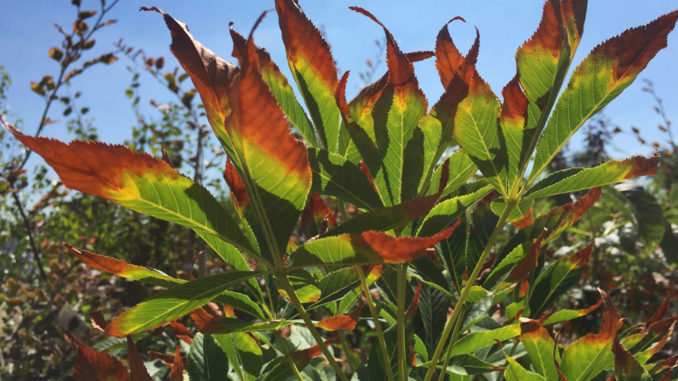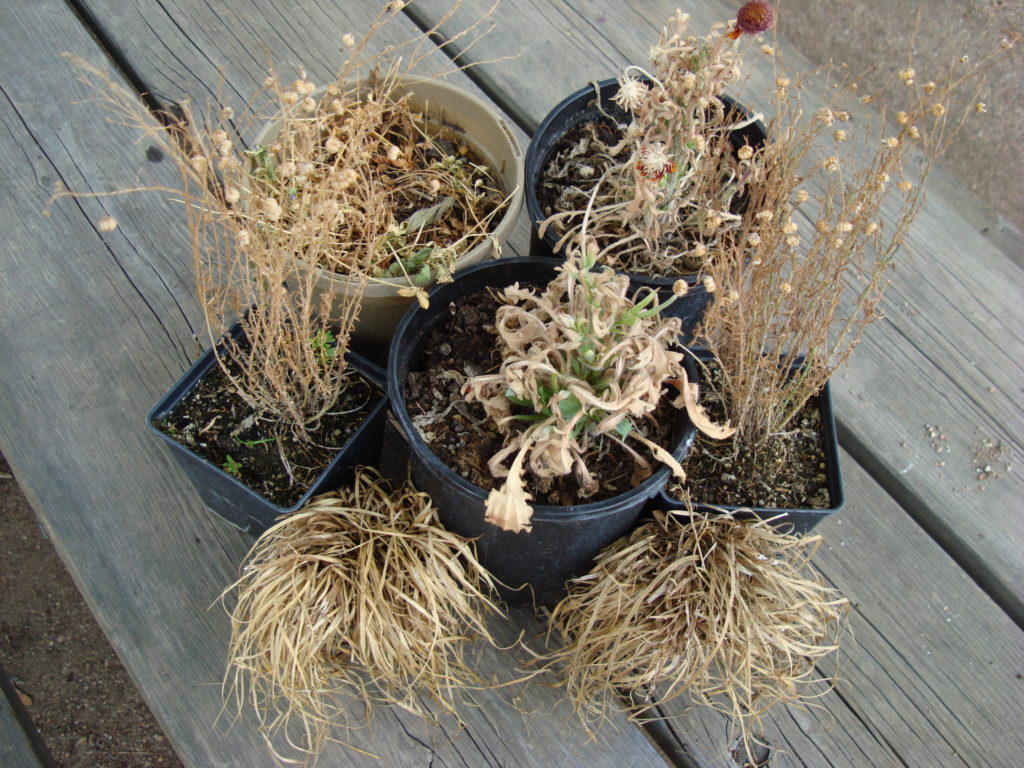

Jesse Eastman
Fort Collins Nursery
In the heat of summer in Colorado, the signs of heat stress can emerge and cause real stress for plant parents. Leaves scorch in the sun, it seems like plants are wilting just as fast as you can water them, and our afternoon thunderstorms have more bark than bite. What should you do to keep your plants looking full and blooming? Here are a few tips that should help you keep your plants happy:
Regular Watering: Water regularly. Plants need water for a bunch of chemical processes, and erratic watering can disrupt healthy growth. One critical process is transpiration. During transpiration, water evaporates through the leaves, creating a layer of cool air around the plant. Without adequate water, there is nothing left to evaporate, and your plant’s air conditioning system can fail.
Protect From Wind: If at all possible, keep your plants out of the direct wind, especially if they are also subject to intense heat and light.
Provide Some Shade: Even the most sun-loving plants won’t mind a little bit of shade in the peak heat of the afternoon. Look for locations that might receive a slight reprieve from the sun’s powerful rays between 2:00 and 3:00 pm. Remember, here on the Front Range we’re nearly a mile closer to the sun than our coastal cousins, and that means our sun is particularly intense!

Avoid Over-Watering: Roots need air as well as water. Too much water in the soil and the roots can rot and, just as with too little water, transpiration can be interrupted. Ensure you have well-draining soil. This will allow plants to take up as much water as they possibly can without forcing the plant into an uncomfortably wet situation. Beware of overwatering wilted plants. Many plants, including tomatoes and squash, wilt in the afternoon heat, even if they have adequate water. Once things cool off in the evening, they’ll perk back up.
Fertilize the Right Amount – Not Too Much, Not Too Little: This may seem complicated, but it’s really pretty simple. Fertilize your plants normally during the spring, when temperatures are cooler and the plant is ready to grow. Once we start seeing daytime highs in the 90s, ease up a little on the plant food. The heat causes chemical processes to slow, and this includes the consumption of nutrients. With less nutrient consumption, you need to apply less fertilizer or risk burning the roots. Once it cools down again in late summer, you can resume a normal feeding schedule. Always fertilize according to the direction on the container, and if you don’t know, ask!
Choose the Right Plants: Some plants tolerate full sun and intense heat. Others wither in the slightest breeze. Proper plant selection and attention to microclimates is one of the basic concepts behind xeriscaping. Even if your goal is not to make a low-water landscape, this concept should be considered every time you put a plant in the ground.
Support Northern Colorado Journalism
Show your support for North Forty News by helping us produce more content. It's a kind and simple gesture that will help us continue to bring more content to you.
BONUS - Donors get a link in their receipt to sign up for our once-per-week instant text messaging alert. Get your e-copy of North Forty News the moment it is released!
Click to Donate
